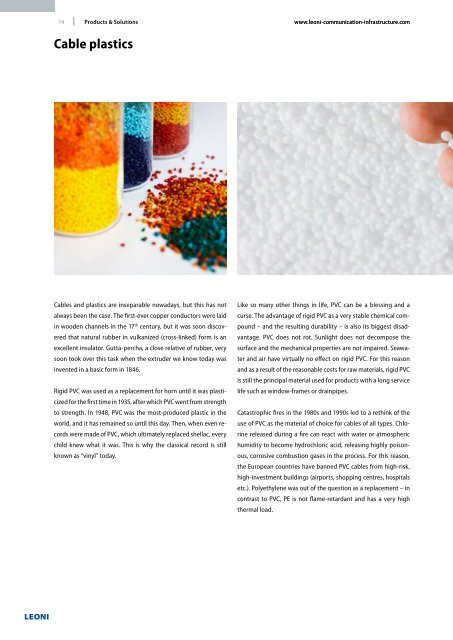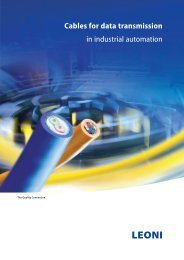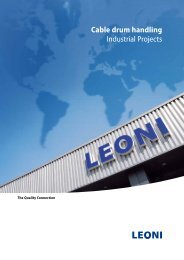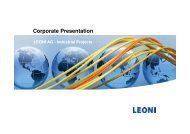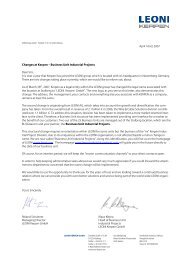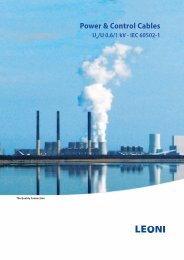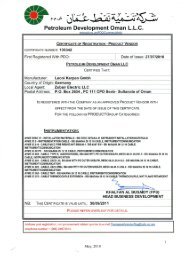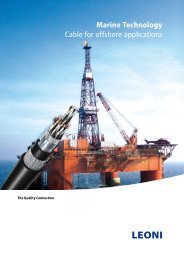Concentrated Solar Power, Getting to the heart of energy - LEONI
Concentrated Solar Power, Getting to the heart of energy - LEONI
Concentrated Solar Power, Getting to the heart of energy - LEONI
- No tags were found...
Create successful ePaper yourself
Turn your PDF publications into a flip-book with our unique Google optimized e-Paper software.
14 Products & Solutionswww.leoni-communication-infrastructure.comCable plasticsCables and plastics are inseparable nowadays, but this has notalways been <strong>the</strong> case. The first-ever copper conduc<strong>to</strong>rs were laidin wooden channels in <strong>the</strong> 17 th century, but it was soon discoveredthat natural rubber in vulkanized (cross-linked) form is anexcellent insula<strong>to</strong>r. Gutta-percha, a close relative <strong>of</strong> rubber, verysoon <strong>to</strong>ok over this task when <strong>the</strong> extruder we know <strong>to</strong>day wasinvented in a basic form in 1846.Rigid PVC was used as a replacement for horn until it was plasticizedfor <strong>the</strong> first time in 1935, after which PVC went from strength<strong>to</strong> strength. In 1948, PVC was <strong>the</strong> most-produced plastic in <strong>the</strong>world, and it has remained so until this day. Then, when even recordswere made <strong>of</strong> PVC, which ultimately replaced shellac, everychild knew what it was. This is why <strong>the</strong> classical record is stillknown as “vinyl” <strong>to</strong>day.Like so many o<strong>the</strong>r things in life, PVC can be a blessing and acurse. The advantage <strong>of</strong> rigid PVC as a very stable chemical compound– and <strong>the</strong> resulting durability – is also its biggest disadvantage.PVC does not rot. Sunlight does not decompose <strong>the</strong>surface and <strong>the</strong> mechanical properties are not impaired. Seawaterand air have virtually no effect on rigid PVC. For this reasonand as a result <strong>of</strong> <strong>the</strong> reasonable costs for raw materials, rigid PVCis still <strong>the</strong> principal material used for products with a long servicelife such as window-frames or drainpipes.Catastrophic fires in <strong>the</strong> 1980s and 1990s led <strong>to</strong> a rethink <strong>of</strong> <strong>the</strong>use <strong>of</strong> PVC as <strong>the</strong> material <strong>of</strong> choice for cables <strong>of</strong> all types. Chlorinereleased during a fire can react with water or atmospherichumidity <strong>to</strong> become hydrochloric acid, releasing highly poisonous,corrosive combustion gases in <strong>the</strong> process. For this reason,<strong>the</strong> European countries have banned PVC cables from high-risk,high-investment buildings (airports, shopping centres, hospitalsetc.). Polyethylene was out <strong>of</strong> <strong>the</strong> question as a replacement – incontrast <strong>to</strong> PVC, PE is not flame-retardant and has a very high<strong>the</strong>rmal load.


